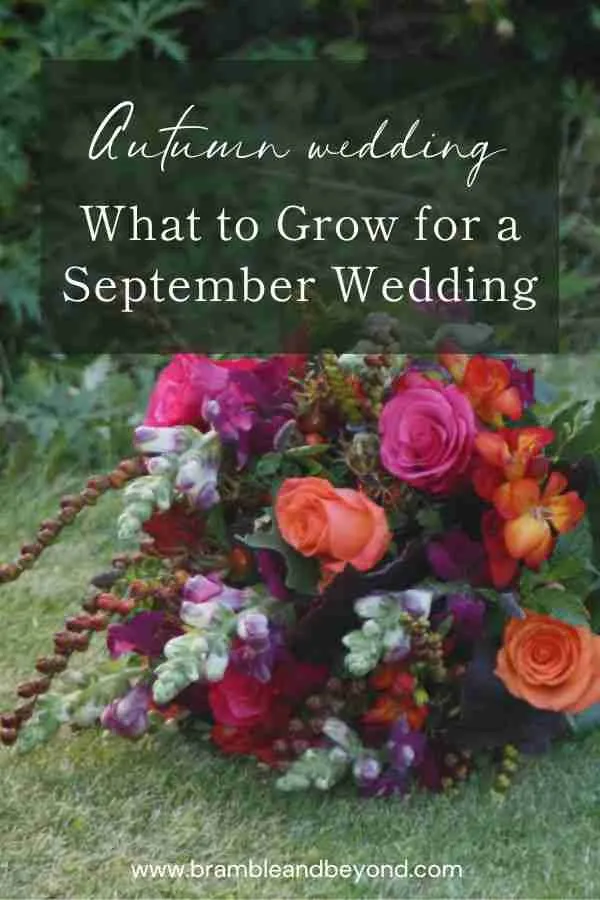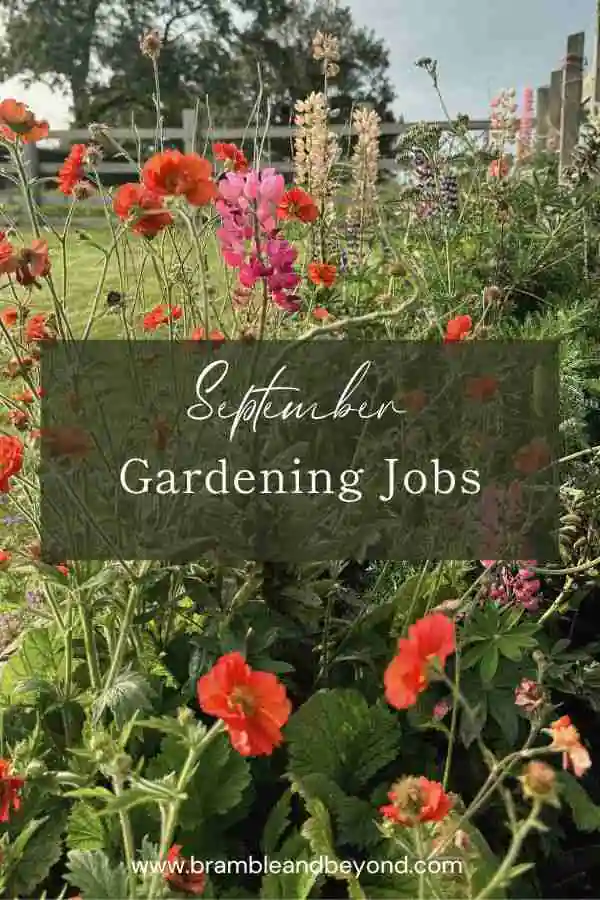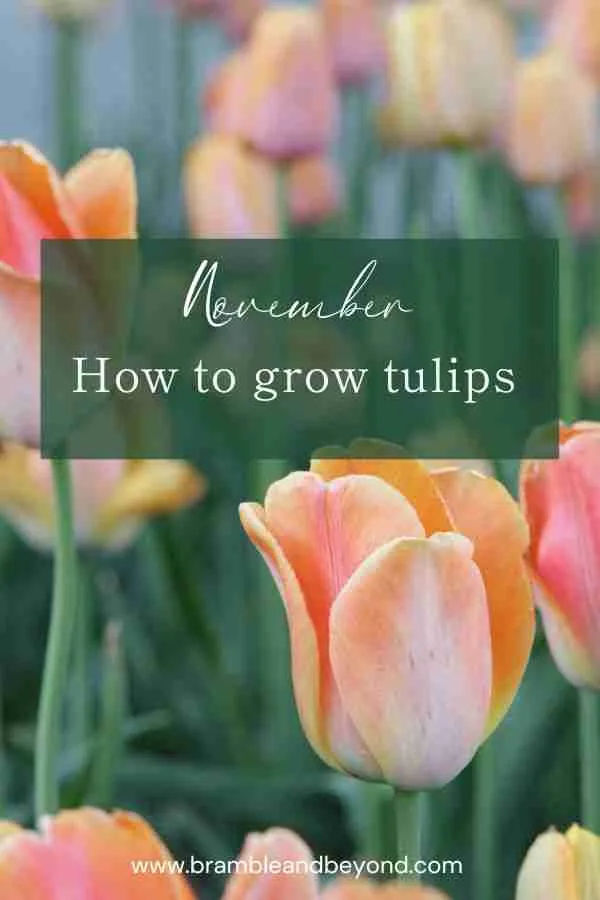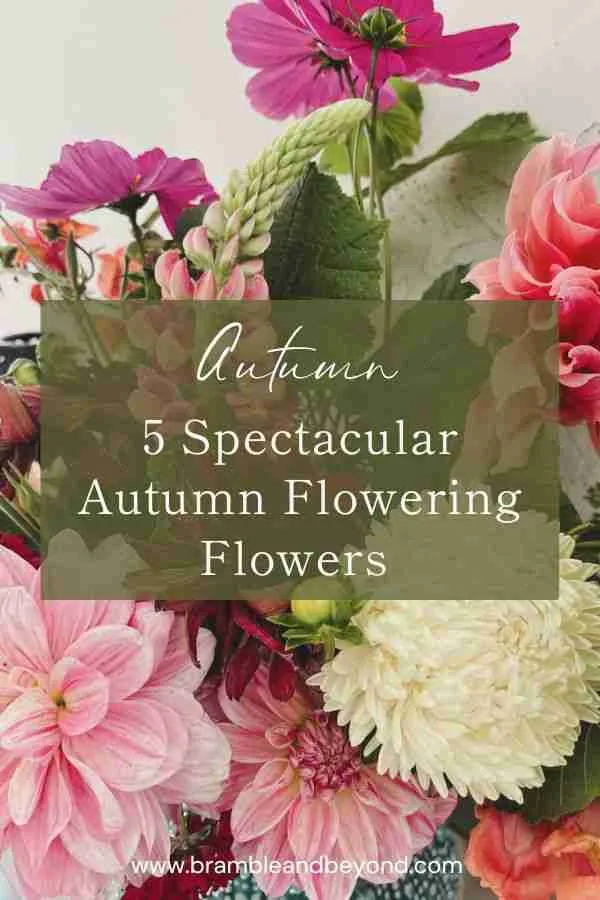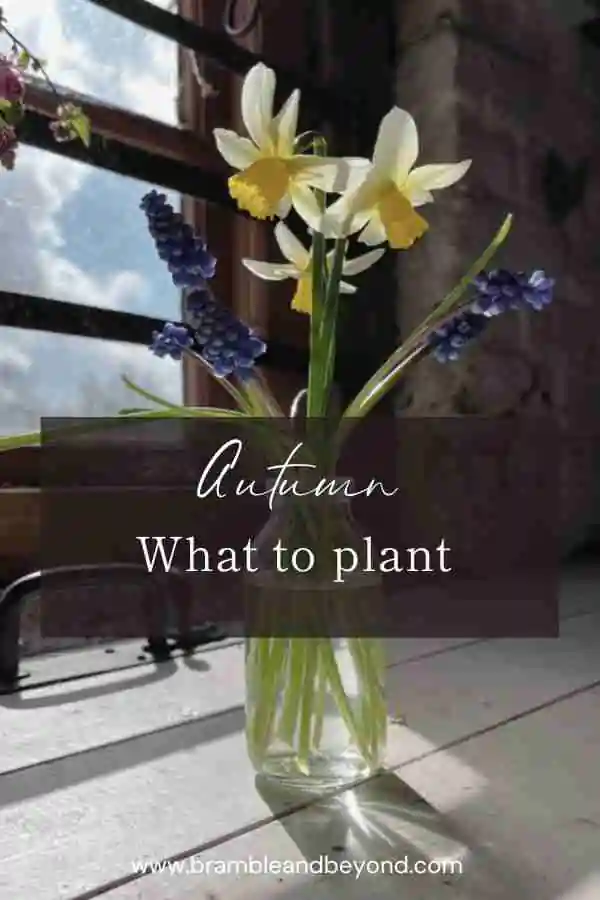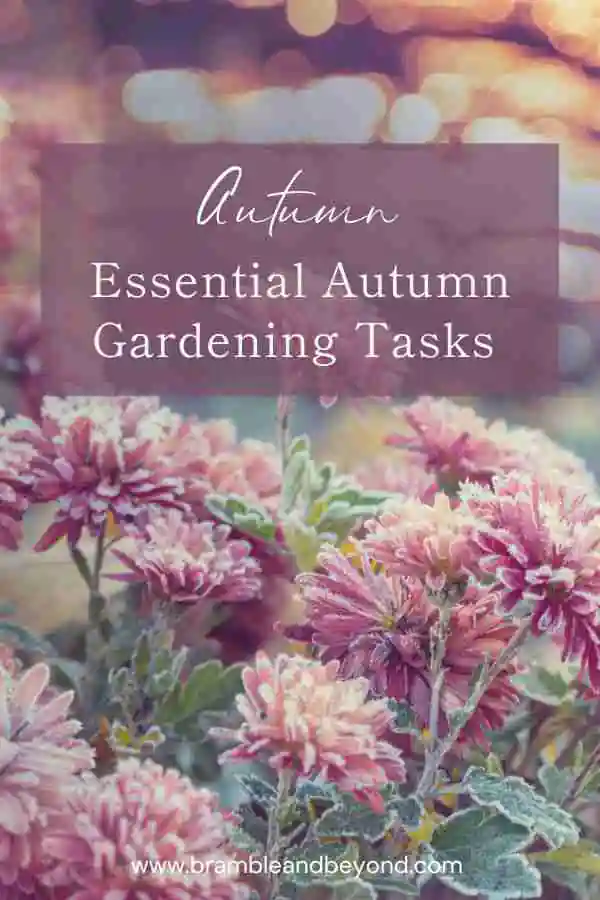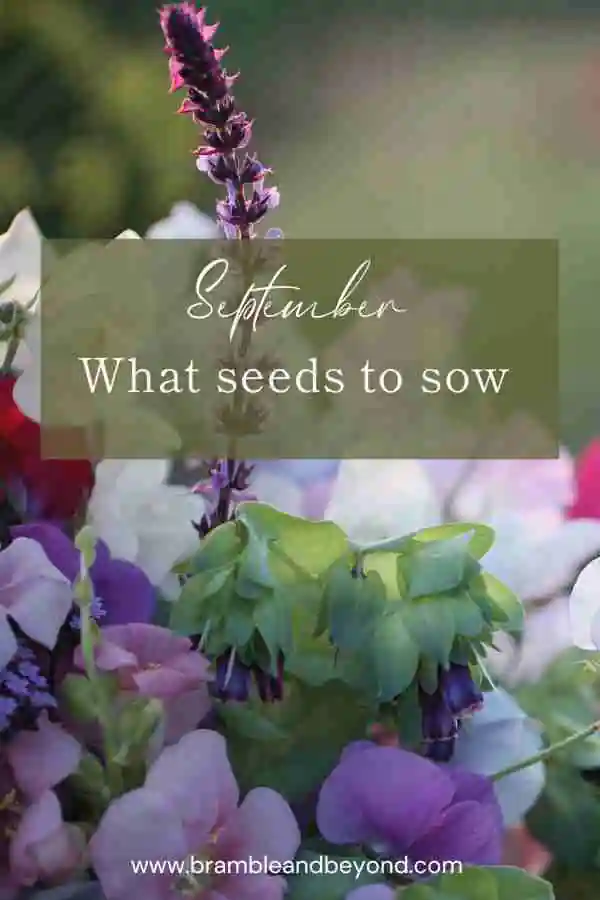Disclosure: This post may contain affiliate links, meaning I get commission if you decide to make a purchase through my links, at no cost to you. Please read my Affiliate Disclosure for more information.
An autumn flower wedding is like a whimsical dance between summer and autumn, where nature’s beauty takes centre stage in the most enchanting way. Imagine a breathtaking fusion of vibrant hues, delightful fragrances, and textures that tickle your senses, creating a picturesque backdrop for your special day. And when it comes to growing flowers for an September wedding, the possibilities are as abundant as the petals themselves.
Get ready to dive into a world of endless choices, with countless varieties blooming to mesmerise your heart and celebrate your love. Let’s embark on a sustainable journey of seasonal flower gardening and transform your fall wedding day into an eco-friendly dream brought to life!
Autumn flower wedding growing guidelines
To make it easier to grow your own flowers for your autumn flower wedding, let the season of your wedding guide you in choosing the colours and plants that are available to you.
In this series of articles covering growing wedding flowers each month of the growing season, I’m excited to share varieties that are perfect for beginners, will definitely bloom, and require minimal space for the number of flowers they produce. With that in mind, I’m have the following caveats:
- I have provided examples in the table below of what could be available in an established garden. Just keep in mind that perennials and shrubs need to be well established and a decent size in order to produce enough flowers. So, planting a peony the year before and expecting it to provide enough flowers for your wedding might not be realistic. However, if you already have three or four peony plants that have been around for at least 3 years, then you might be in business!
- Most of my suggestions are flowers that can be grown from seeds (or bulbs) and will bloom in just one season. Although, this might mean sowing them a year in advance to have the widest variety to choose from.
- Make sure you have enough space in a dedicated garden bed to grow the flowers you need. You can calculate how much space you’ll need for your wedding flowers by clicking here.
- The quantities I provide in my recipe are based on 1 pedestal arrangement. You can find the number of flowers you need for other arrangements here.
- The ‘Fancy’ flower use category is optional and adds an extra level of texture, magic, or wow to your arrangement.
- Growing your own flowers means that you need to accept a certain level of imperfection. If you’re looking for perfectly straight roses, tulips, or ranunculus, it might be best to leave it to the professionals and hire a florist. Growing your own flowers adds a charming and unruly touch to your arrangements, which should be embraced. Rest assured, beautiful and charming flowers will result.
- Keep in mind that you can only cut the flowers that are in bloom at the time of your wedding. Wishing for peonies or roses to bloom on demand won’t make it happen. Although you can assist seeds and bulbs by controlling the temperature, their growth is ultimately determined by nature. This advanced gardening technique might require more equipment, so please keep that in mind.
Flowers for a September wedding
The flowers that can grow in September or August are pretty similar, especially at the start of September. Although by the end of September, your flower choice might start to dwindle. And a touch of an early frost could ruin the lot! So keep an eye on the weather and protect your plants if necessary. For a September wedding, here are some of the most popular flowers to consider:
| Name | Type | Flower Form | Sow |
|---|---|---|---|
| Amaranthus (Love-Lies-Bleeding), Celosia (Cockscomb), Cosmos, Cynoglossum amabile (Chinese Forget me not), Limonium bonduelii (Statice), Lisianthus (Eustoma), Nicotiana (Tobacco Plant), Orlaya (White Lace Flower), Phlox drummondii grandiflora, Rudbeckia (Black-Eyed Susan, Coneflower), Scabious | Annual | Filler | Mar-May |
| Calendula (Marigolds), Centaurea cyanus (Cornflower), Clarkia (Godetia), Daucus, Gypsophila (Baby Breath), Lathyrus odoratus (Sweet Pea), Lavatera (Annual Mallow), Malope, Nigella, Tropaeolum majus (Nasturtium) | Hardy Annual | Filler | Mar-May |
| Antirrhinum (Snap Dragon), Callistephus chinensis (China Aster), Helianthus (Sunflower), Larkspur, Zinnia | Annual | Focal | Mar – May |
| Dahlia | Tuber | Focal | Mar |
| Basil, Borage, Cerinthe Major (Honeywort), Dill, Lepidium sativum (Greek Cress), Senecio cineraria (Dusty Miller) | Annual | Foliage | Apr – May |
| Achillea (Yarrow), Alchemilla mollis (Ladies Mantle), Alstroemeria (Peruvian Lily), Aquilegia (Granny’s Bonnet, Columbine), Astrantia (Masterwort), Centranthus ruber (Valerian),Freesia, Geum, Linaria (Toadflax), Lysimachia (loosestrife), Penstemon, Sanguisorba, Tanacetum parthenium (Feverfew) | Perennial | Filler | |
| Eryngium (See Holly), Hydrangea, Rose | Perennial | Focal | |
| Physacorpus (NineBark), Brachiglotis, Cornus, Lavender, Mentha (Mint), Philadelphus | Shrub | Foliage |
Now here’s a tip to make your life easier: instead of trying to grow every single flower out there, it’s best to stick to 6 or 7 varieties (10 max). This way, you can create arrangements that are 1/3 Focal, 1/3 Filler, 1/3 Foliage, and add in any optional fancy twiddly bits to make your arrangements really shine!
Fall wedding flower arrangement recipe
For a typical wedding of 100 guests, the following arrangements may be required with the number of stems usually needed.
| Arrangement | No. of Stems | No. of Arrangements | Total Stems |
|---|---|---|---|
| Jam-jar posies | 20 | 10 | 200 |
| Large jugs of flowers | 50 | 3 | 150 |
| Pedestal arrangement | 75 | 1 | 75 |
| Bride’s bouquet | 50 | 1 | 50 |
| Bridesmaids’ posies | 35 | 3 | 105 |
| Buttonholes | 5 | 5 | 25 |
The list may seem endless when choosing the perfect flowers for your September wedding. But if you focus on the style and colours you want, then use the list above for the flowers that are at their best during September, you will soon have a shortlist.
Using a pedestal arrangement as an example, one recipe for a September wedding could be as follows:
- Focal – 10 dahlia, 10 zinnia, 5 snap dragon,
- Filler – 10 calendula, 10 nicotiana, 5 amaranthus,
- Foliage – 5 tall branches of foliage, 10 greek cress/dill, 10 ammi majus.
- Fancy – sweet pea tendrils (or the flowers, if they happen to be in bloom).
Many flowers that were available to you in August may also be available in September, so do take a look at the August flower wedding suggestions to see if any of those are preferable.
This combination will still give you the flexibility of having several different colour schemes, as each flower has several colours you can choose from.
Dahlias
Dahlias are like the stars of the flower world, dazzling us with their stunning variety of shapes and sizes. They come in all sorts of forms, from dainty daisy-like petals to fluffy pompoms and extravagant blousy blooms. The best part? There’s a dahlia for every colour preference, so you’ll never tire of their captivating beauty. These vibrant and eye-catching flowers are perfect for creating breathtaking arrangements.
The great thing about dahlias is their versatility. With such a wide range of shapes and sizes available, you can create stunning floral designs using dahlias as both focal and filler flowers in various colours and forms. They truly are a bouquet all on their own!
Growing dahlias is a breeze once the risk of frost has passed. These tubers are cut-and-come-again flowers, meaning the more you cut them, the more they bloom. So don’t hesitate to trim them down every week for continuous flowering. You’ll be amazed at how quickly new blooms appear.
Now, here’s a little secret about dahlias: their vase life is a bit on the shorter side, which is why florists don’t often use them. However, with proper care and conditioning, you can enjoy them for up to 5 days. So, if you’re picking them on a Wednesday for your Saturday wedding, you’ll be absolutely fine.
Dahlias are true performers and will keep blooming until the first frost arrives. Just take a look at the beautiful dahlias I picked last November, right before I tucked their tubers in for their winter rest.
So, if you’re a nature-loving bride-to-be planning a sustainable seasonal flower garden, don’t miss out on dahlias for your August wedding. They’ll add a touch of whimsy and charm to your special day, all while staying true to your commitment to sustainability.
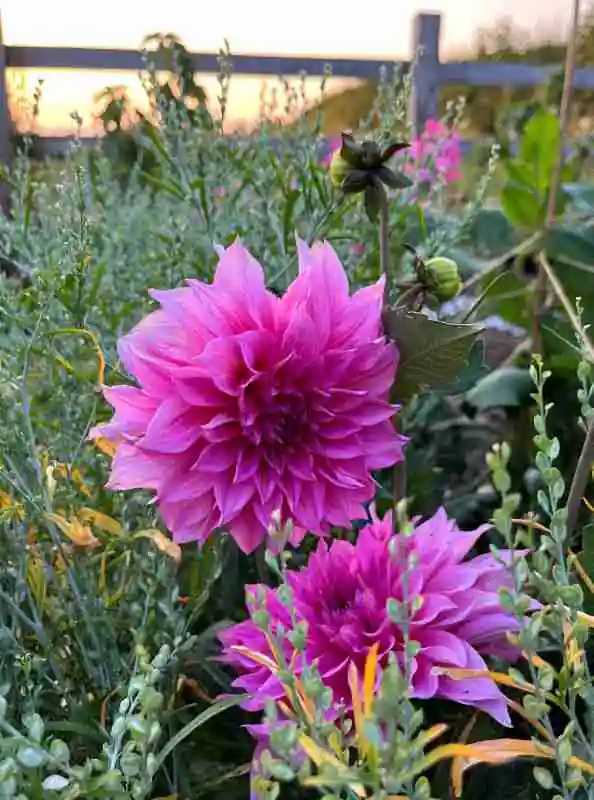
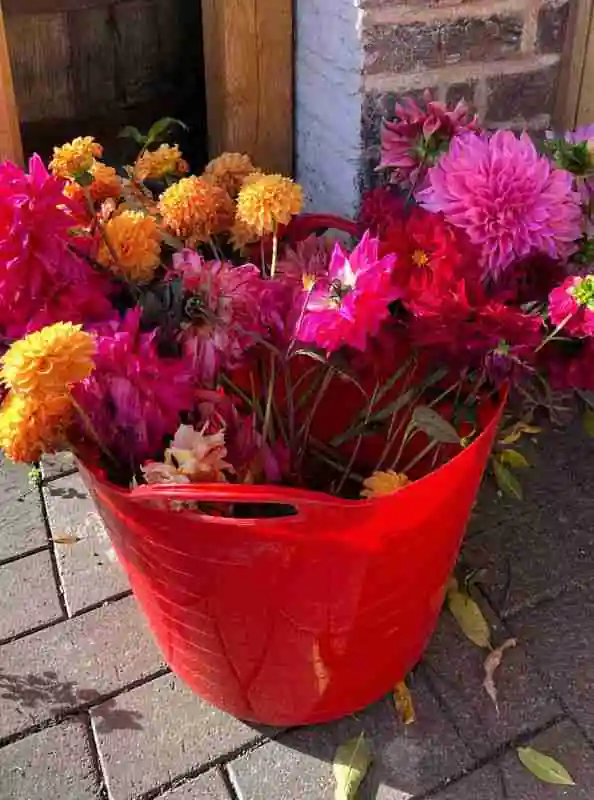
Zinnia
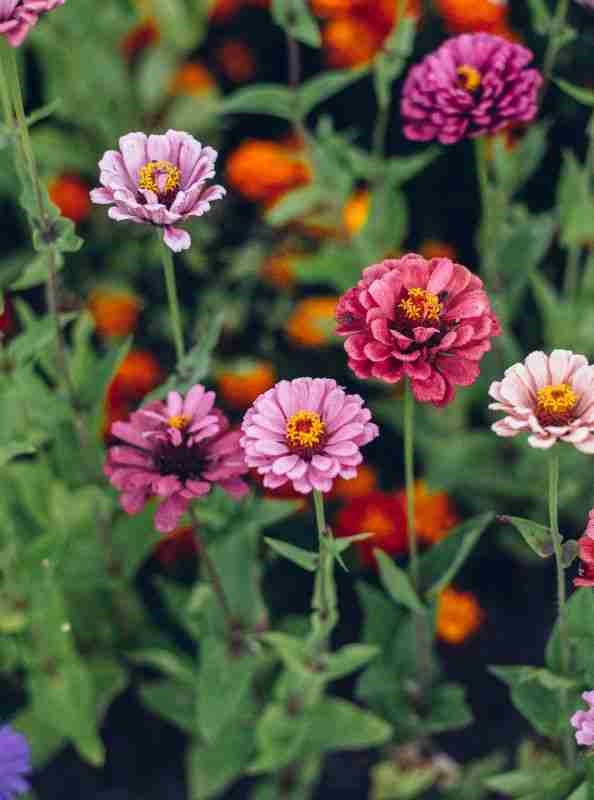
Zinnias are such a delightful flower to grow if you want to add a pop of colour. They come in a variety of sizes and colours, featuring their lovely daisy-like flower heads.
The best part is, they are super easy to grow. You can either sow them directly into the ground in late spring, or start them in pots and then transplant them once they have grown big enough.
Another amazing thing about zinnias is their ability to tolerate drought and thrive under the summer sun. They typically bloom from the middle of summer until the first frost. Just remember, it’s best to wait until the soil warms up before starting these seeds.
If you’re planning a September wedding, you should consider choosing zinnia varieties that bloom in late summer, such as ‘Zahara’ and ‘Benary’s Giant’. These varieties offer large, vibrant flowers that will definitely create an impact.
One more thing worth mentioning is that zinnias are cut-and-come-again flowers. Once they are established, you can expect to have at least 3 stems from a single plant at any given time.
Snapdragon
Snapdragon (Antirrhinum majus) is a delightful annual flower that is perfect for September weddings. It features tall, upright stems adorned with spikes of exquisite and delicate blossoms in a wide range of shades, ranging from soft pastels to vibrant and bold hues. These charming flowers will undoubtedly add a unique and elegant touch to any bouquet or arrangement.
Growing snapdragon from seed is a breeze, and it is best to sow the seeds in the autumn or early spring to enjoy beautiful blooms in September.
Snapdragon is a cut-and-come-again flower, meaning you can continuously harvest its stems. However, it is recommended to only take one stem from a plant at a time to ensure its long-term health and vitality.
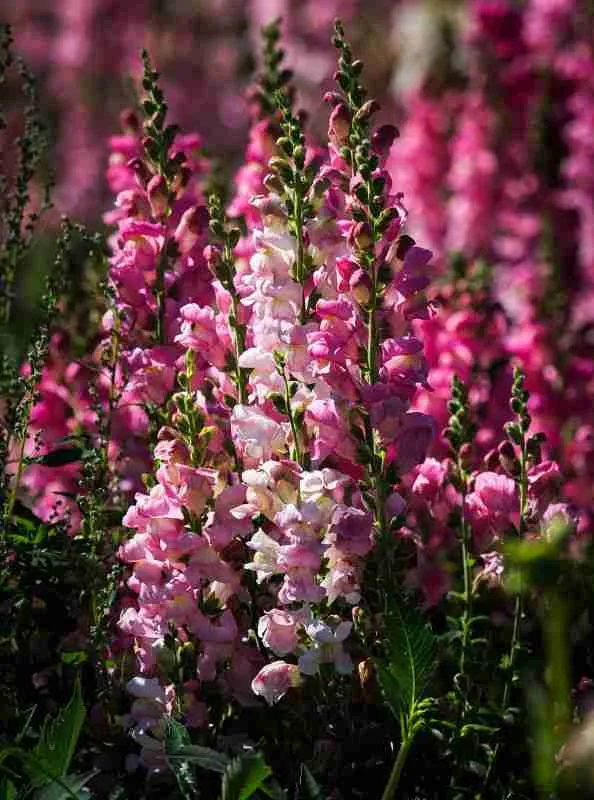
Calendula
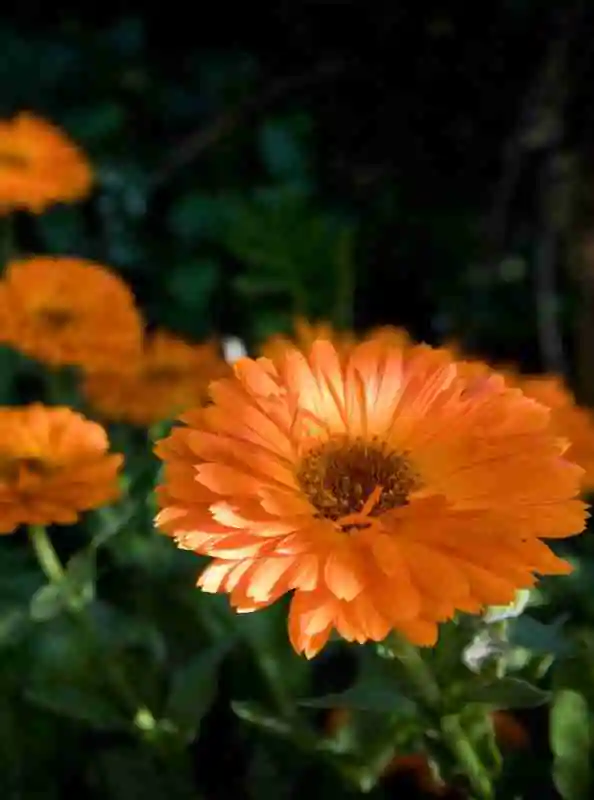
Calendula, also known as marigolds, are a wonderful flower to incorporate into your September wedding arrangements. These flowers come in a variety of gorgeous oranges, yellows, and reds, and they boast a lengthy blooming season that spans from late spring to late autumn. If bright orange isn’t your preference, newer varieties offer a softer palette of colours that are definitely worth considering.
The vibrant colours and extended blooming season of calendula make them a popular choice for wedding bouquets, as they can infuse any arrangement with a lively burst of colour.
Furthermore, calendula is a breeze to grow from seed and has the potential to self-seed, providing you with a continuous supply of these delightful blooms year after year. This flower is also known as a cut-and-come-again variety, meaning that once it’s established, you can expect at least 5 stems from a single plant at any given time.
Nicotiana
Nicotiana (Tobacco Plant) is another annual flower that is perfect for adding vibrant colours and interesting textures to your September wedding arrangements. It also has tall, upright stems and delicate, tube-shaped flowers with a sweet fragrance, available in shades of white, pink, purple, and green.
Personally, I adore the lime green variety of Nicotiana. It complements any colour scheme and can even serve as an alternative foliage if desired.
Nicotiana is a breeze to grow from seed and should be sown in the spring for gorgeous flowers in September.
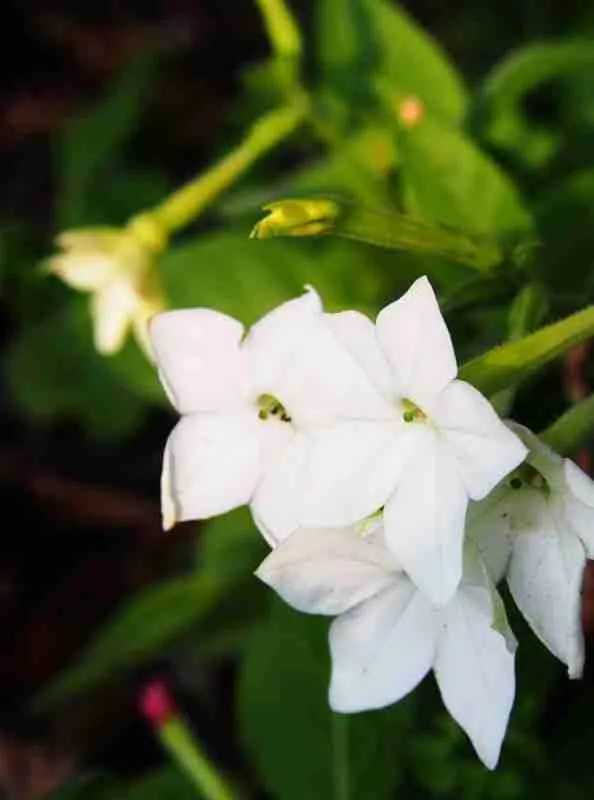
Similar to cosmos, nicotiana is a cut-and-come-again flower, meaning it will continue to bloom profusely. You can expect to have approximately 5 flowering stems from a single plant at any given time.
Including nicotiana in your bouquet or arrangement will create a soft and romantic ambiance that will surely captivate everyone.
Amaranthus
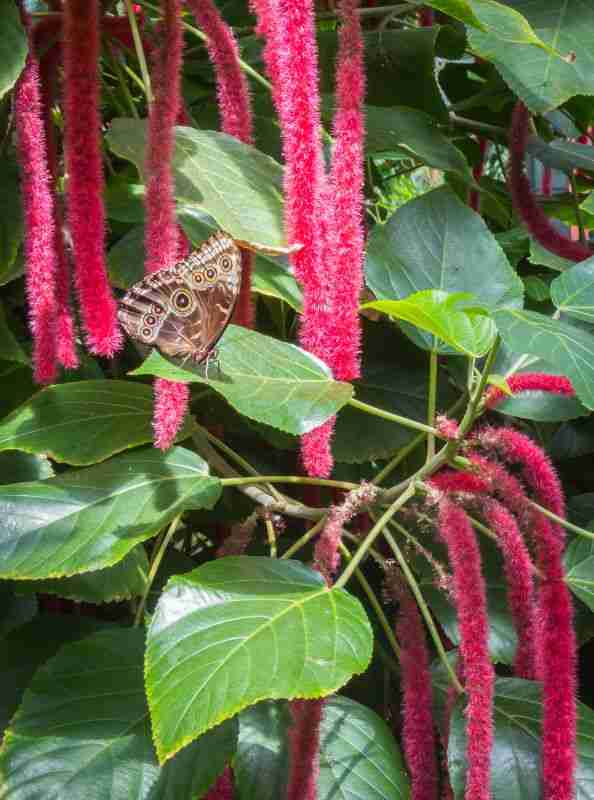
Amaranthus is a wonderful flower to incorporate into your September wedding arrangements. It brings a unique texture and graceful movement to any bouquet or arrangement. With its tall, upright stems and delicate, feathery blooms in shades of pink, red, green, and purple, it adds a touch of elegance.
Growing amaranthus from seed is a breeze, and it’s best to sow them in the spring for beautiful flowers in September. This cut-and-come-again flower will continue to bloom until the first frost, providing you with around 5 stems per plant at any given time.
Not only does amaranthus add depth to your arrangements, but it also complements other blossoms such as dahlias, zinnias, snapdragons, and nicotiana, creating a stunning visual display.
Ammi Majus
Ammi majus is a wonderful choice for a September wedding. It features lovely, lacy foliage and stunning, umbrella-shaped white flower heads that resemble cow parsley.
Growing ammi majus from seed is easy, and you can sow the seeds in the autumn or early spring to enjoy beautiful flowers in September. This plant produces multiple stems, providing you with around 6 stems per plant at any given time.
I personally find that this plant blooms throughout the entire summer and is a must-have in my cutting garden.

Greek Cress
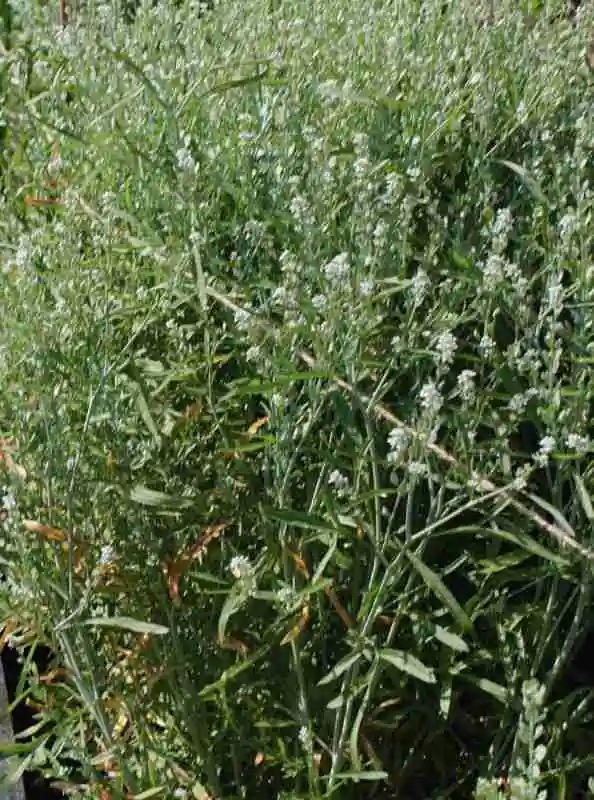
Greek Cress is a fantastic foliage plant that florists absolutely adore, yet it is not often available for purchase. Luckily, it is incredibly easy to grow on your own. When it starts to produce tall stiff pale green stems, that’s when you know it’s going to seed – and that’s exactly what you want to use in your arrangement.
For a bold and dramatic effect, group bunches of Greek Cress together. If you prefer a more delicate and airy feel, simply scatter single stems throughout your arrangement.
If you find yourself lacking other foliage options for your wedding arrangements, Greek Cress is the perfect choice for a July wedding.
The seeds of Greek Cress can be planted close together, maximising the use of space without sacrificing the impact it brings to your arrangement. And the best part? You don’t need a large quantity of it to create a truly stunning effect.
Dill
Dill is a delightful herb that is easy to grow, and including a touch of dill in your arrangement can add an extra layer of beauty.
With its delicate, feathery leaves and small yellow/green flowers, dill brings a soft and airy feel to floral arrangements.
You can easily grow dill from seed, and it should be sown in early spring to have flowers and foliage by September.
Dill is a multi-stem plant, and you can typically get about 6 stems per plant at any given time, especially if you opt to use the foliage rather than the flower heads.
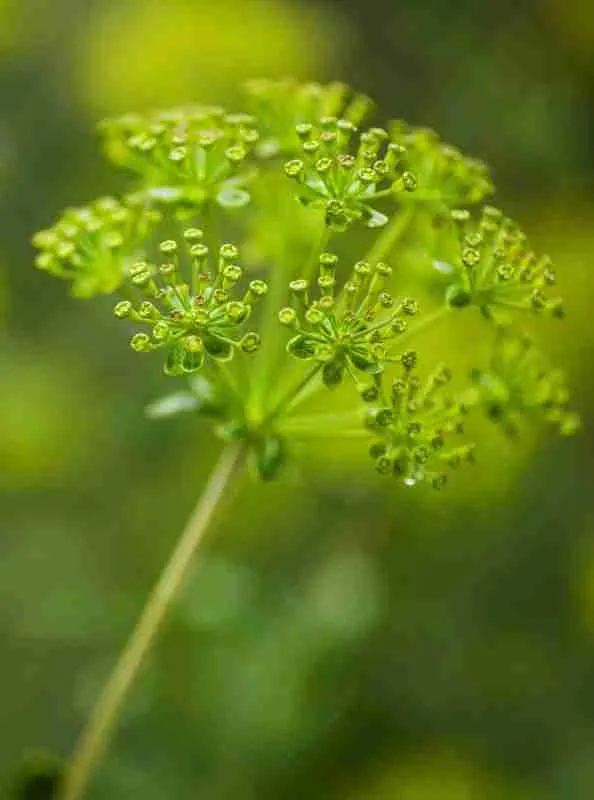
These flower examples are here to give you an idea for your mid summer wedding, but there are plenty of options to choose from. Sarah Raven is a great place to start looking for ideas. I love her site, it’s like flower inspiration overload! However, sometimes the quality of the seeds, tubers, and bulbs can be a bit hit-and-miss, and they can also be a bit pricey. On the other hand, I have been really impressed with the quality of the bulbs and tubers from Peter Nyssen, and if you’re looking to buy seeds I have seeds for all of the annuals and biennials mentioned above in my shop, but Chiltern Seeds is also a fantastic place to go.
Now that you know the best flowers for an September wedding, you can start planning your special day and decide on what flowers to grow for a September wedding. With the right flowers, you can create a stunning display that will make your autumn flower wedding unforgettable.

